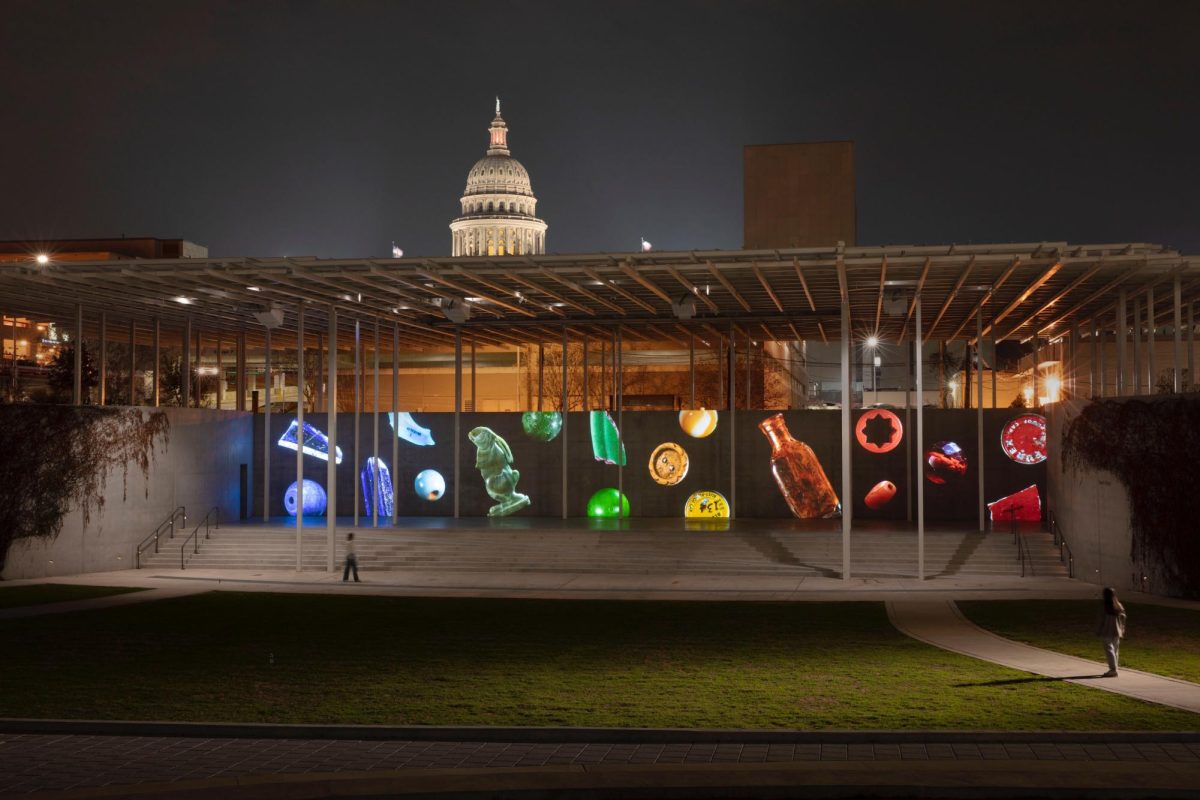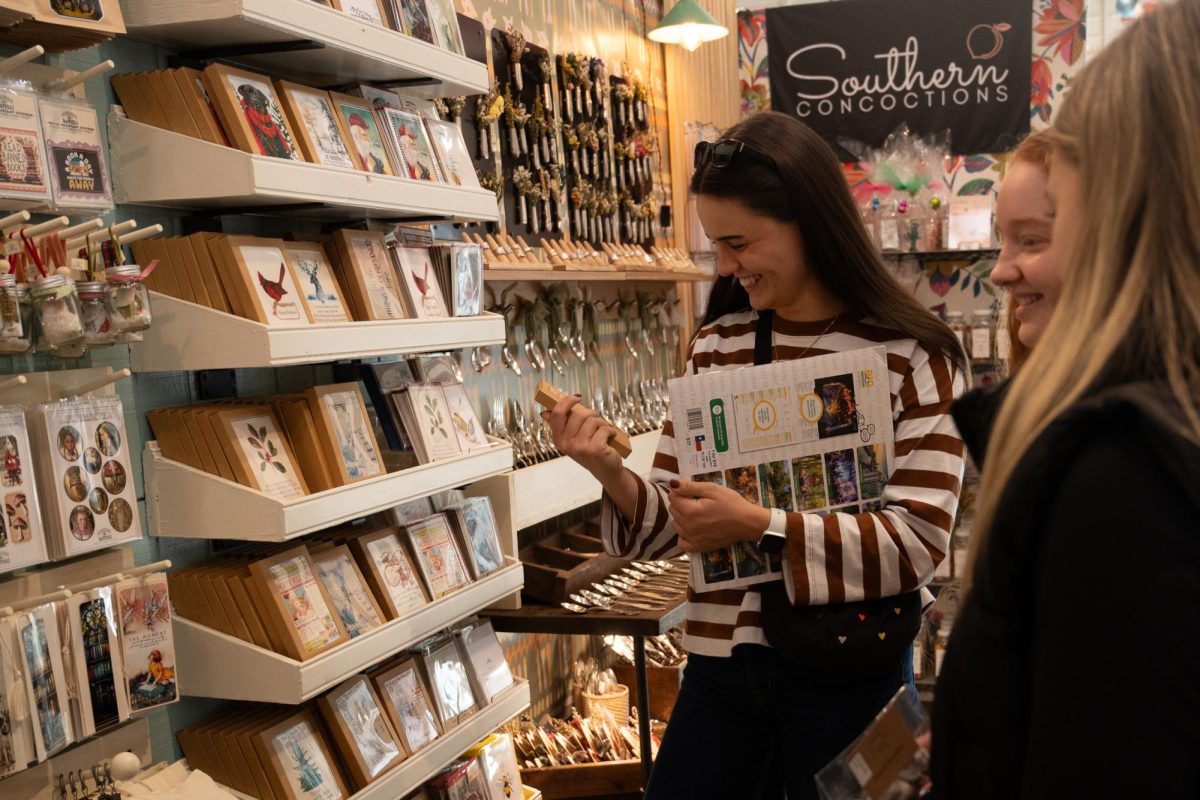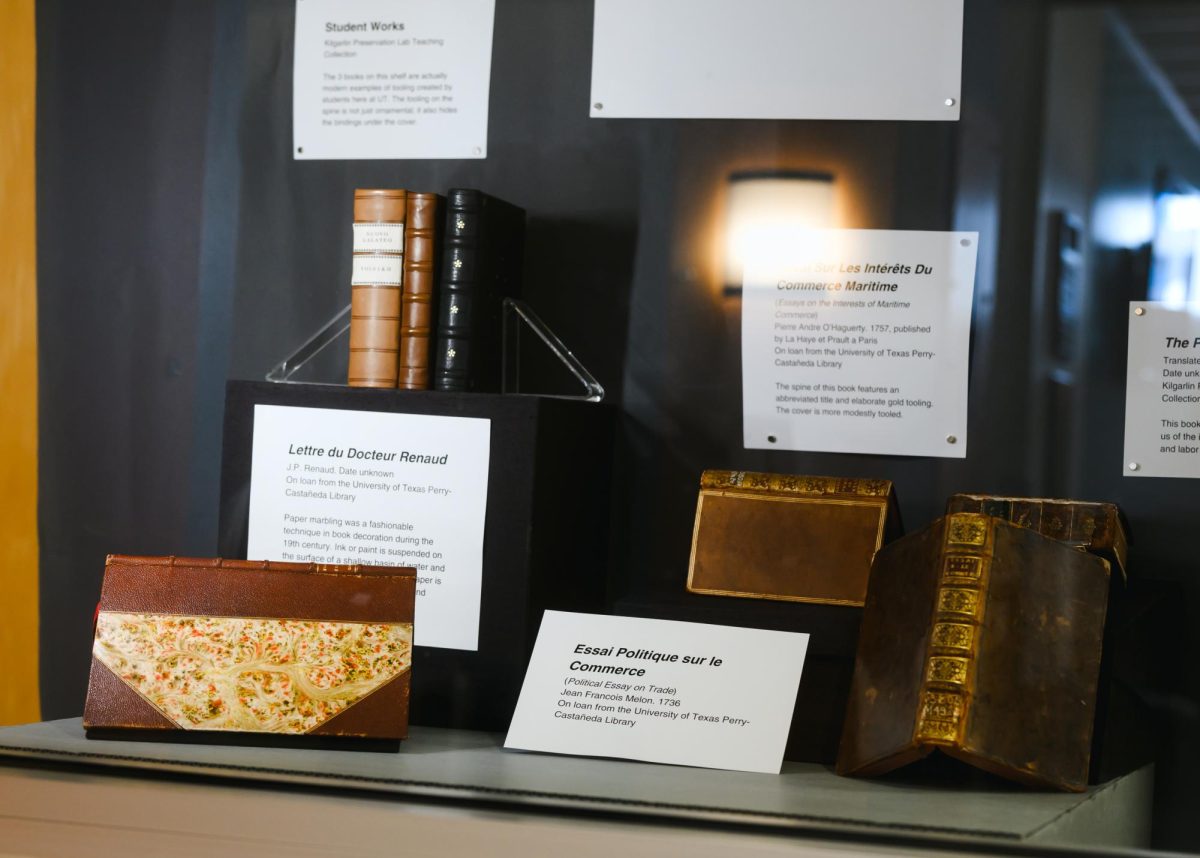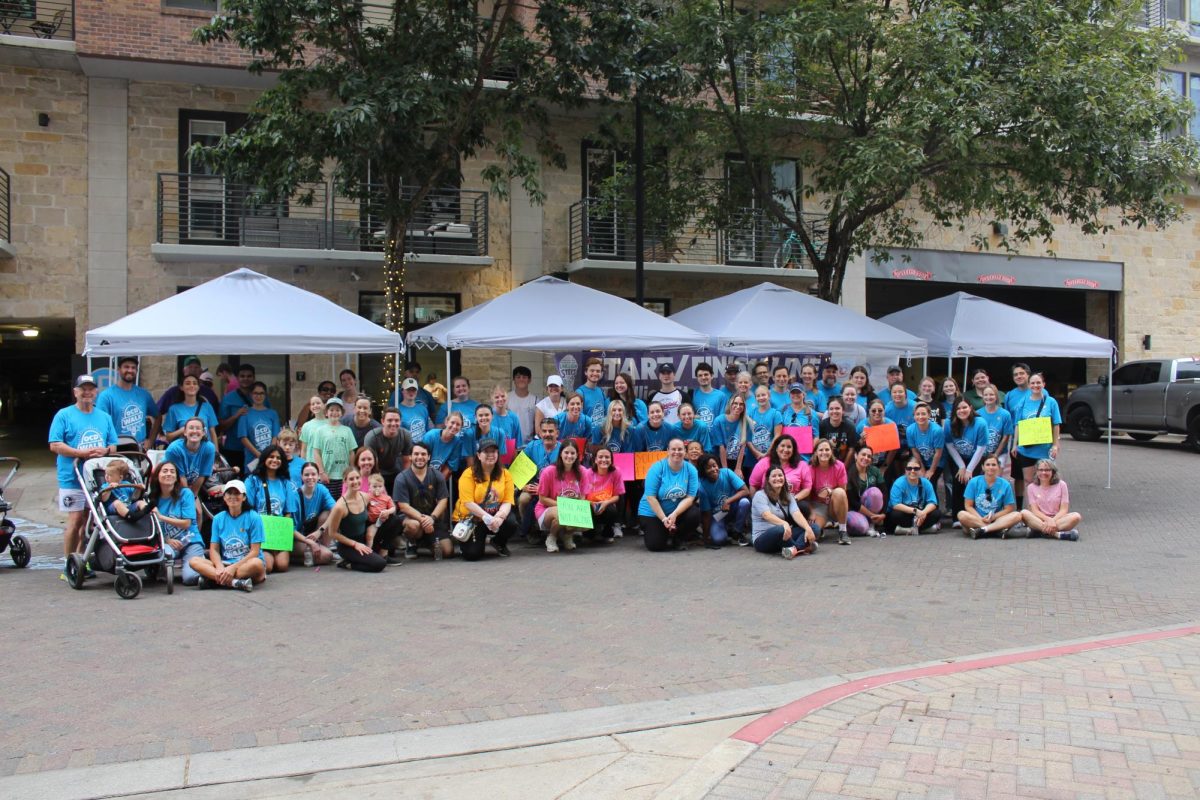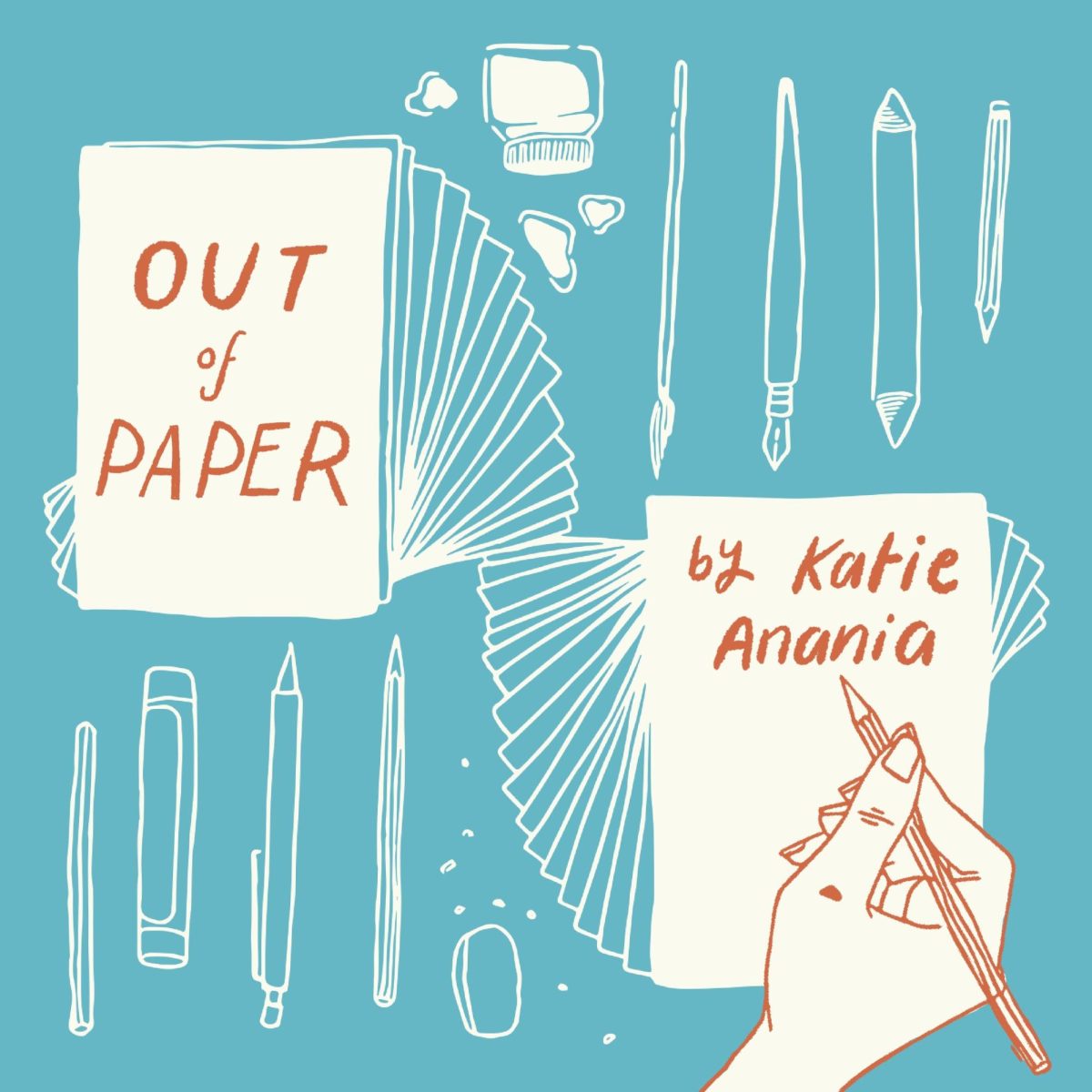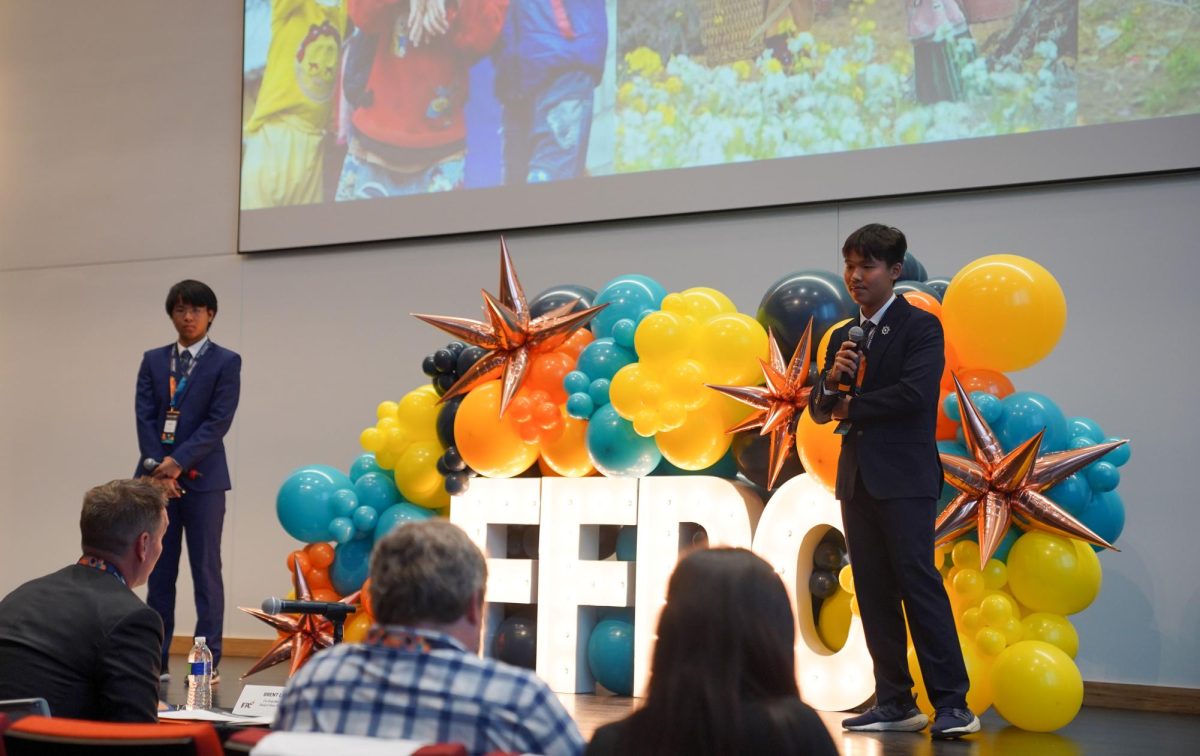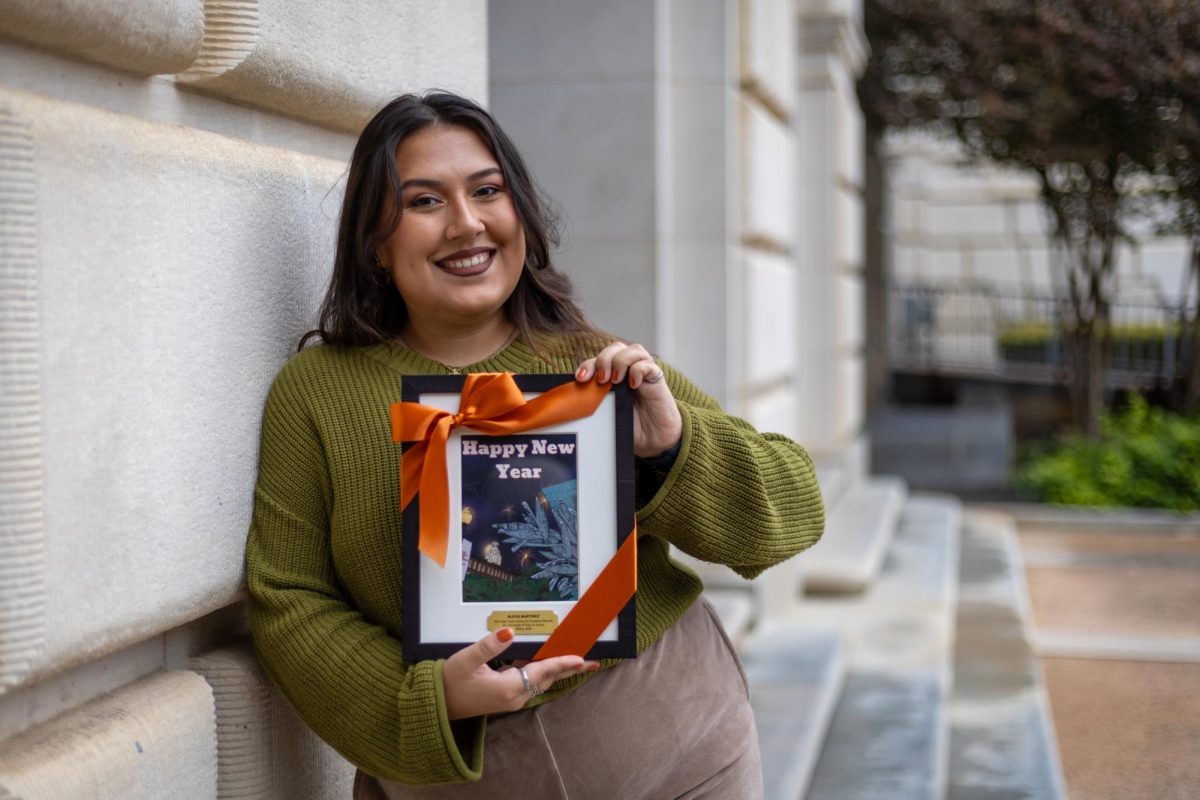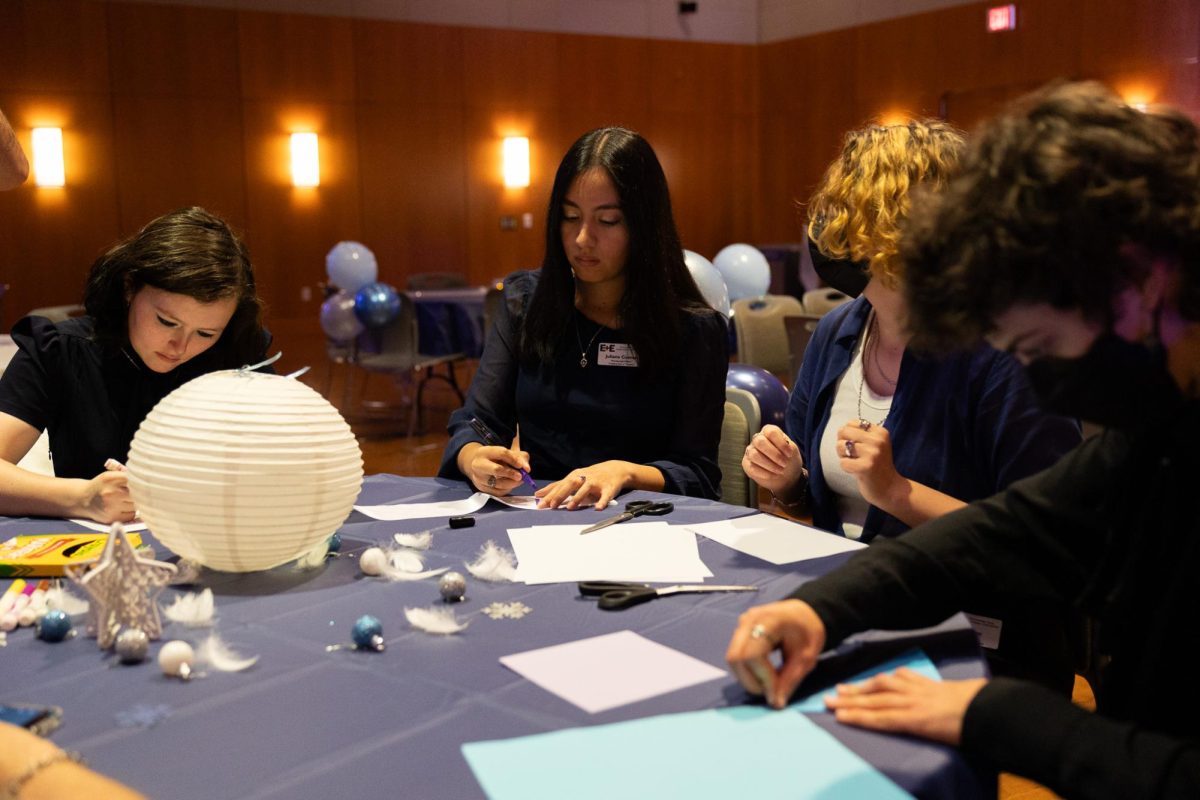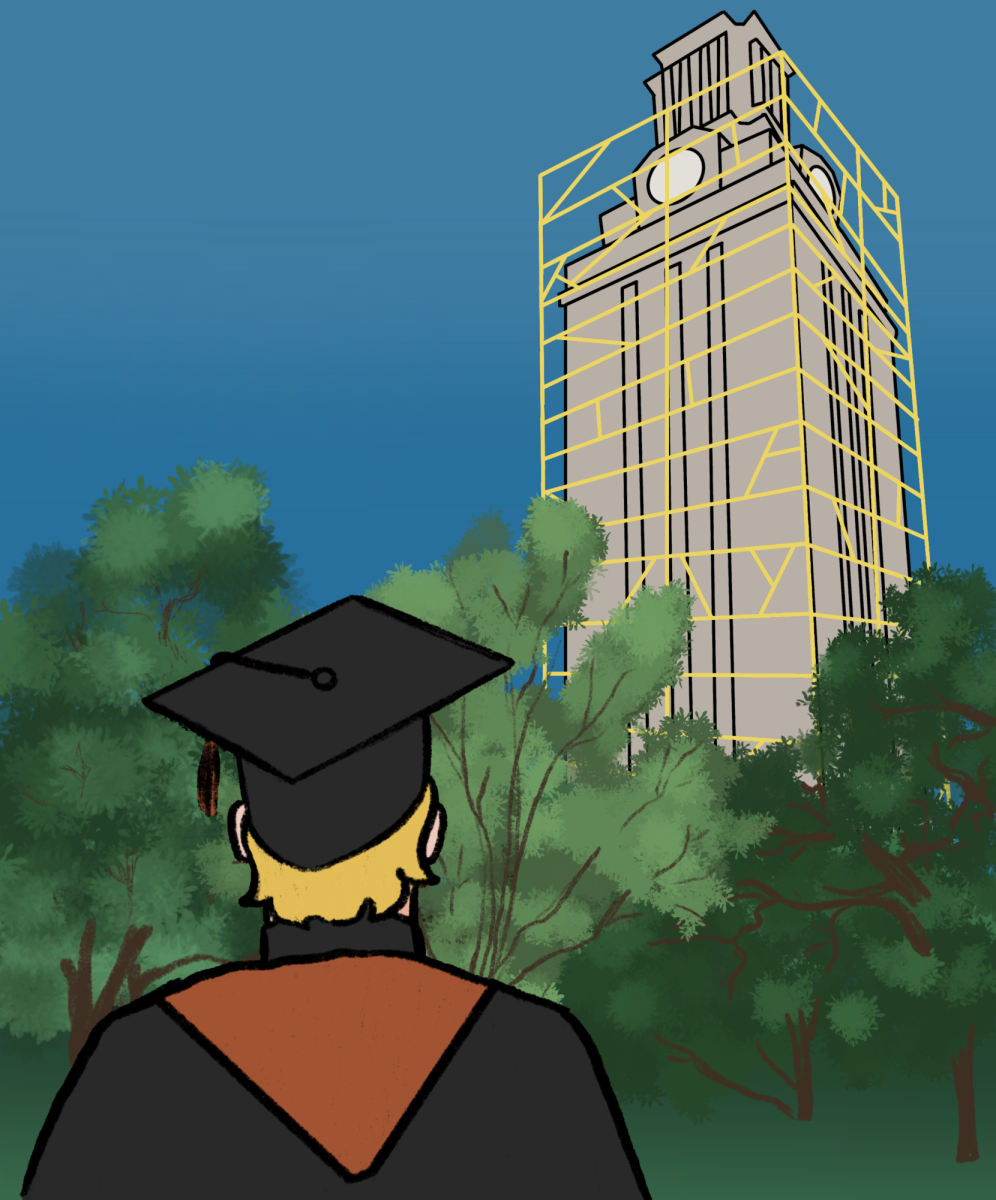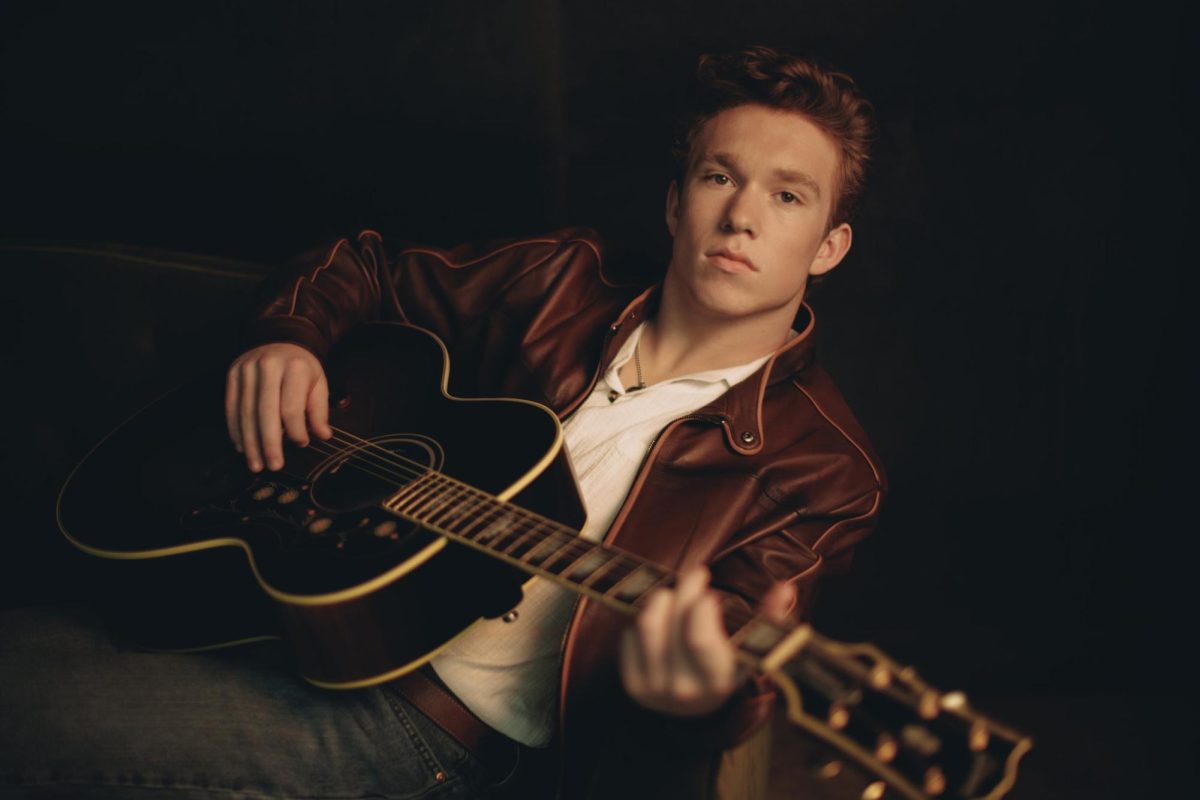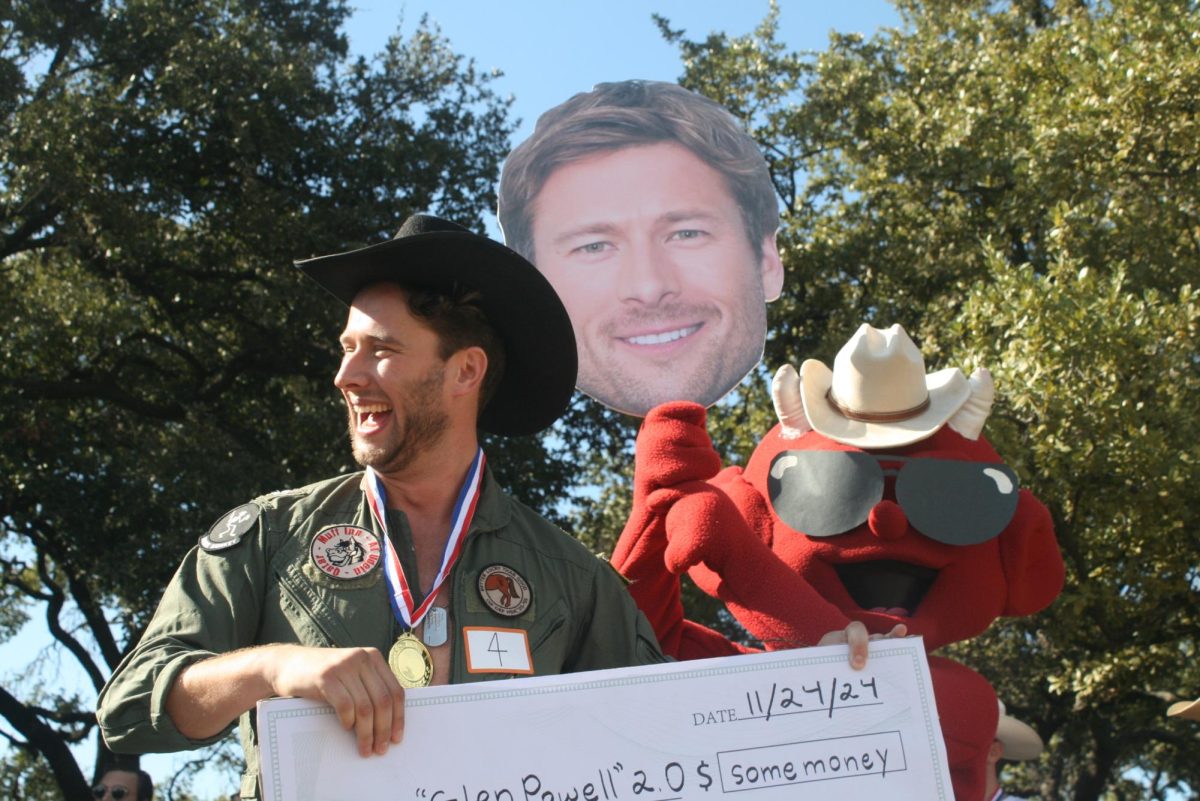On Saturday, a field of people at the Moody Amphitheater gathered after sunset to immerse themselves in the opening of two UT professors’ art installation. Guests spread out on blue-striped blankets, listening to a live performance of the video artwork’s soundtrack as footage of old pennies, buttons, jewelry and miscellaneous gadgets spun in and out of the projection on stage.
At the end of 2020, Waterloo Greenway Conservancy asked professors Teresa Hubbard and Alexander Birchler to produce a public artwork for the Moody Amphitheater at Waterloo Park. Their video piece depicts everyday mid-19th to mid-20th century artifacts excavated from Waller Creek moving against a dark background to a commissioned score by Alex Weston. The Texas Archaeological Research Laboratory archived the artifacts prior to the artists’ commission, and the artifacts coincidentally fit the artists’ vision of painting a picture of the history of Austin life along the creek.
“The most important thing was not just to bring people back to the park, I think people are already congregating downtown as we increase in population. (The important thing) was to bring people back to this conversation,” Birchler, a Professor of Practice and John D. Murchison Professorship Fellow in Art, said. “We really wanted to make an artwork that starts a conversation about what was before this park was this park? Where is this park heading?”
The installation will run every night when there isn’t another performance at the park. Its message aligns with the Waterloo Greenway Conservancy’s motive to emphasize the park as a way to celebrate the Austin community. The artists studied the artifacts for a year to decide which ones to showcase and how to showcase them in the video.
“What interested us is that these are very every day, rather unspectacular objects. They speak to the daily life of people from the mid-19th to the mid-20th century,” Hubbard, a William and Bettye Nowlin Professor of Photography said. “People have lived and visited that area for thousands of years, but all other traces have been washed away.”
The exhibit plays a unique role in providing context to the city’s history. The piece inspired Hubbard and Birchler to create a public outreach initiative where professionals with a passion for art and history will respond to the site or objects’ history through poetry or essays on the installation’s website under “Dialogues”.
“We call them ‘respondents,’ and some of them will then be invited later on into (public) conversations in the park,” Birchler said. “It’s a great honor to have been able to help to start this conversation with an artwork.”
MacKenzie Stevens, Waterloo Greenway Conservancy’s curatorial advisor, said the artwork’s mission to speak to the creek’s history ties to a broader city desire.
“Everybody in Austin right now is very aware of how much transition the city is in, how much is changing and how much construction there is everywhere. There’s a real hopefulness of preserving the past and making connections to the past and the present,” Stevens said. “There’s this awareness of where we are, evidence of us in the future and what that looks like.”

